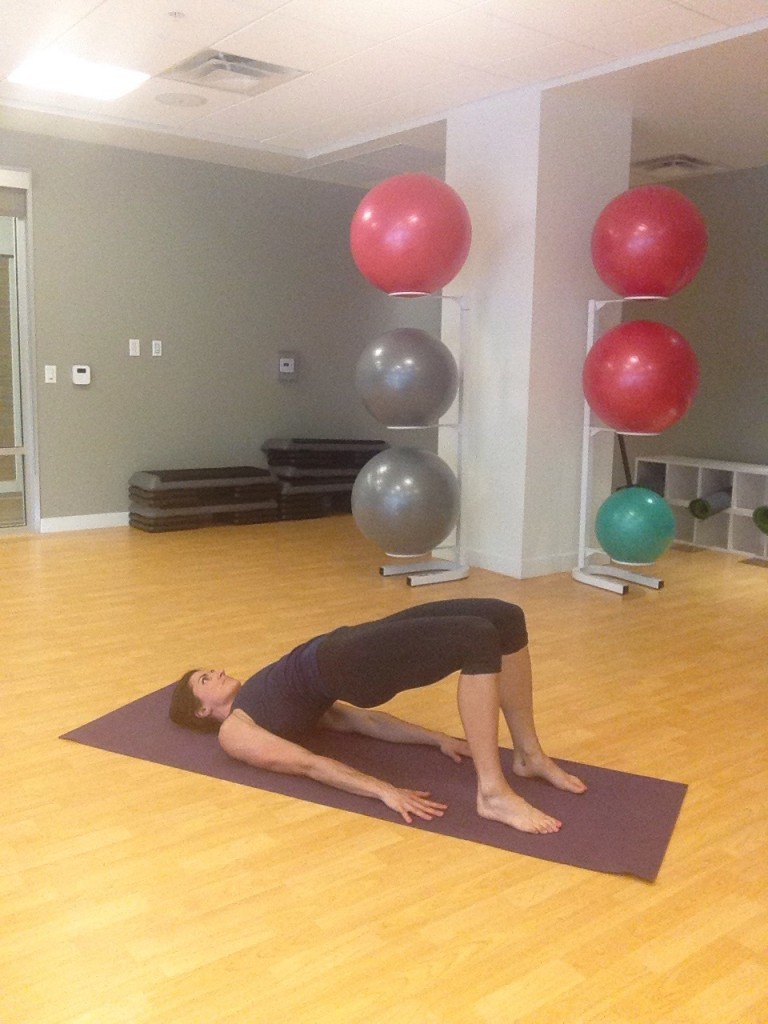2 Minutes to Relieve Back Pain: Bridge Pose
I’m sure you’ve heard that Sitting Is The New Smoking.
It’s estimated that 31 million Americans suffer from back pain, tightness, or aggravation at any given time.
It’s true that many people sit for too long and don’t use their back muscles enough to provide healthy support for their spines.
Some people workout quite a lot but don’t effectively stretch the muscles of the thighs, hips, and core in order to not feel stiff and achy throughout the day.
Others may fall somewhere in the middle, experiencing both issues—tight muscles from exercise combined with inactivity from a desk job.
Here are 3 amazingly simple ways Bridge Pose can help you stretch tight muscles while strengthening those that support a healthy back and core:
1: Breath work
Breathing, the foundation for all yoga postures, serves as a guide for moving in and out of the pose, for understanding how deep to go, and in the case of bridge pose—supporting a healthy back— it serves as a wake up call to the diaphragm which plays an integral role in breathing.
Bridge pose opens up the front side of the body allowing a full deep breath to flow into the deepest part of the lungs thus, requiring the diaphragm to contract.
2: Activation of key muscles
The posterior chain consists of all the muscles that run up the backside of the body from the soles of your feet to the base of your skull—muscles of the feet, calves, hamstrings, glutes, and spine—contribute to your ability to move! Everything from jumping, walking, running, pushing, pulling and even standing up and sitting down requires healthy activation of the posterior chain.
Bridge Pose activates all of these muscles, awakening their ability to improve mobility, create stability and reduce acute and chronic lower back pain syndromes.
3: Stretching the front of the body
Opening the front side of the body allows for length in the muscles that are too often and for too long crunched and hunched over at a desk all day. By lengthening the anterior chain muscles—quads, hip flexors, abdominals, chest, and neck you create much needed space and length in the spinal column. In addition, you’ll help improve your posture, which is a known contributor to back pain.
BEST. Breakfast. Ever. (recipe inside)
How to Get a Healthy Back in Two Minutes:
- Begin lying on your back with knees bent, feet hip width apart and set close to the hips so that middle fingers can just barely graze the heels. (If your knees don’t like this, set feet a little further from hips)
- With arms by sides, palms down, begin belly breathing. Allow belly to distend with the inhale filling even into the lower back. Fully exhale. Repeat 2 more times.
- Continue belly breaths as you begin to lift hips off the floor. Press into heels firing the hamstrings and glutes. Keep knees aligned (neither caving in nor splaying out). Tilt pelvis to curl tailbone toward the knees (think lengthening the low back).
- With each inhale, fill the belly and lengthen the front side open: chest lifts toward chin.
- With each exhale, squeeze the abdominals and stay lifted as you reactivate the muscles of the posterior chain.
- Try lifting into bridge and holding for 3 long breaths. Then transition into active bridge moving with breath for 5 repetitions. Inhale and lift up; Exhale and lower down.
- Repeat this pattern for up to two minutes.
In Love & Gratitude,

Missi Holt
